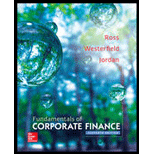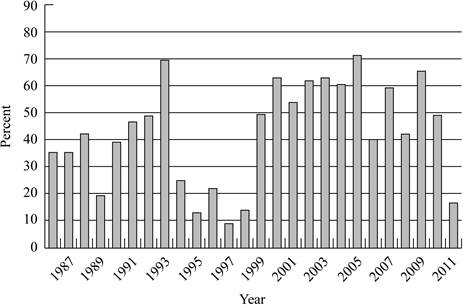
Case summary:
Person X works for SA Company. He is bit confused on which investment option he must choose. Later, with the help of AS, financial service representative advice, X had decided to invest on diversified portfolio. He decided to invest 70% of his investment in equities, 5% in the
The graph represents the percentage of managed equity mutual funds beating the Vanguard 500 Index funds:

To determine: What investment decision would person X make for the equity portion of 401(k) account.
Want to see the full answer?
Check out a sample textbook solution
Chapter 22 Solutions
Fundamentals of Corporate Finance
- What is a problem statement outline? Could you please give seome examples? What are the research questions and methodology? How do they work, please some examples? What is a research framework outline? Please give some examples. What is a Final Research Concept? Please give some example.arrow_forwardSkip Stephens is trying to decide whether it would be wise to consolidate his debt by borrowing funds from Syndicated Lending, a firm that he doesn’t know much about. Syndicated is an Internet lender that doesn’t post much information about the costs of the loans it offers. Some of the additional information Skip has gathered from various sources suggests the Syndicated might use such unethical practices as “bait and switch” to attract customers. Discussion questions: Is there an ethical problem? If so, what is it? What are the implications if Skip borrows from Syndicated? Should Skip borrow from Syndicated?arrow_forward9-15arrow_forward



